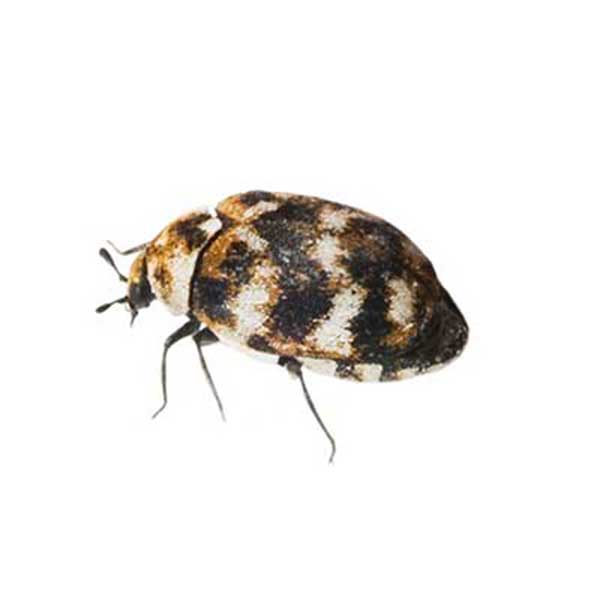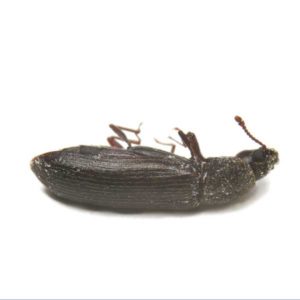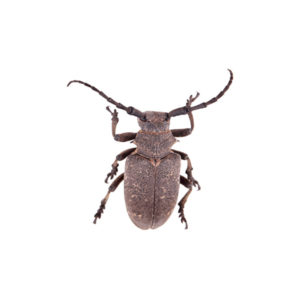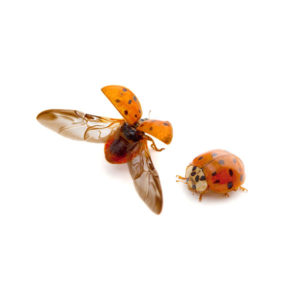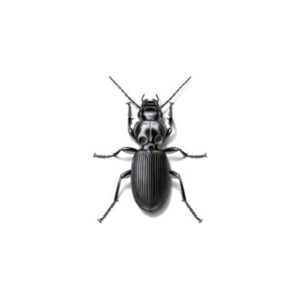CARPET BEETLE IDENTIFICATION
The carpet beetle is found worldwide and is widely distributed in the United States. This species is known for damaging fabrics, and the three most commonly encountered are the black carpet beetle, varied carpet beetle, and the common carpet beetle. Carpet beetles are known to infest goods made from animal products, such as carpets, wool, textiles, and preserved museum specimens. Adult carpet beetles are small, 1/8 to 3/16 inches, rounded and gray to blackish in color, with a varied pattern of white and orange scales on their back.
Due to their similar size, common attraction to fabrics, and preference for indoor spaces homeowners often confuse carpet beetles with bed bugs. Carpet beetles are often attracted to fabrics, which means, just like bed bugs, they may be found on bedding and in mattresses. The difference is that bed bugs bite and feed on blood, while carpet beetles do not bite and feed on natural fibers, plants, pet hair, lint, feathers, and silk. Carpet beetle larvae have prickly hairs that may cause a reaction in some people resembling a bed bug bite.
CARPET BEETLE LIFE STAGES
The life cycle of the carpet beetle begins when an adult female lays her eggs. Each female lays approximately 40-90 small, white eggs over a period of three weeks, after which she dies. Outdoors, females lay eggs in the nests of birds, mice, and other insects. Carpet beetle eggs laid indoors are found in lint accumulations, in air ducts, under heavy furniture, or behind baseboards.
Carpet beetle eggs hatch in 10-20 days and larvae will begin their destructive feeding, avoiding light and molting several times as they develop. Young beetles can be found in the lower parts of clothes closets, woolen materials, at the edge of carpeting under baseboards, or inside upholstered furniture. Carpet beetle young develop into adults within nine months to two years and are most frequently found outdoors in flowers in the spring and summer.
CARPET BEETLE THREATS
Although carpet beetles are not dangerous to humans, they are harmful to our belongings. It is the larval stage that causes damage. Textiles, carpets, and fabrics will be peppered with irregular holes, while museum specimens will be eaten away, often leaving fine dust around or beneath the specimen.
The common carpet beetle may also cause dermatitis when human skin comes in contact with shed larval skins.
CARPET BEETLE EXTERMINATION AND CONTROL
Carpet beetles are among the most difficult indoor pests to control because of their ability to find food in dark places and to disperse widely throughout a building. To avoid an infestation, follow these tips:
- Eliminate the food source: Remove accumulations of lint, hair, dead insects, and other debris that serve as food to carpet beetles.
- Remove old spider webs and bird, rodent, bee, and wasp nests, which harbor infestations.
- Examine cut flowers for adult beetles before bringing the flowers inside.
- Make sure that window screens, doors, and vents are secure to keep carpet beetles from flying indoors.
- Regularly clean rugs, draperies, upholstered furniture, closets, and other locations where carpet beetles congregate.
- Regularly clean mounted animal specimens such as museum pieces or game trophies.
- Laundering washable items in hot water or dry-cleaning them will kill all stages of these insects. This is the most important method for controlling carpet beetles in clothing, blankets, and other washable articles.
Need help with carpet beetles?
We'll call you! Leave your information below.

